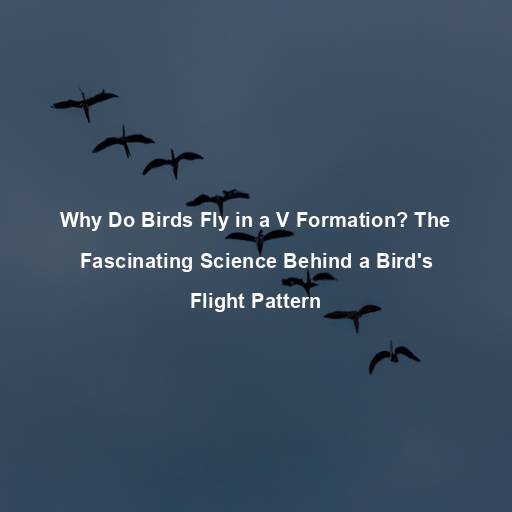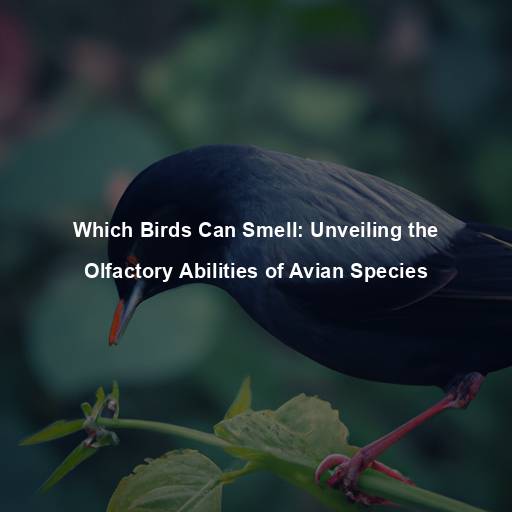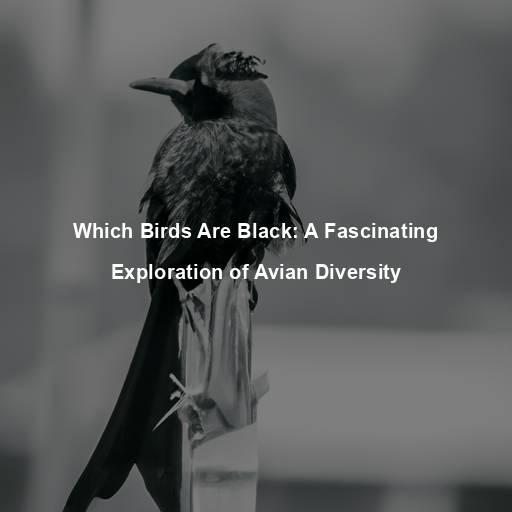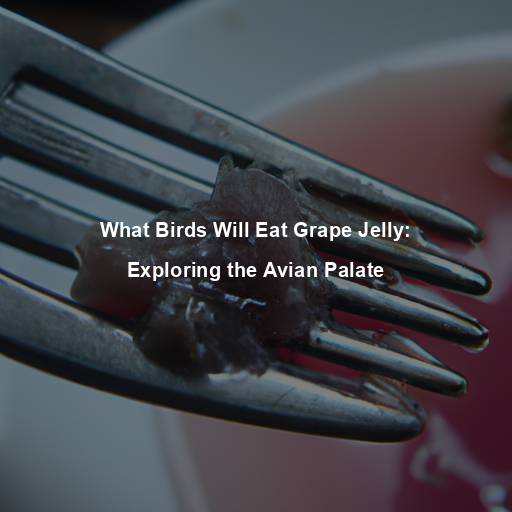Why Do Birds Fly in a V Formation? The Fascinating Science Behind a Bird’s Flight Pattern
Last Updated on July 10, 2023 by Evan
Contents [hide]
- 1 The Marvel of Bird Migration
- 1.1 The V Formation: A Common Sight in the Sky
- 1.2 Advantages of Flying in a V Formation
- 1.3 The Role of Aerodynamics
- 1.4 The Power of Collective Intelligence
- 1.5 Evolutionary Origins
- 1.6 Aerodynamic Advantages in the V Formation
- 1.7 Cooperation and Information Sharing
- 1.8 Flexibility and Adaptability
- 1.9 Unanswered Questions and Ongoing Research
- 1.10 A Collective Effort: Cooperative Flight Strategies
- 1.11 Harnessing the Power of Aerodynamics
- 1.12 The V Formation in Nature: Species and Variations
- 1.13 Evolutionary Origins: Ancient Flight Patterns
- 1.14 Ongoing Research and Future Discoveries
- 2 FAQs – Why do birds fly in a V formation?
The Marvel of Bird Migration
Birds, those enchanting creatures that grace our skies, never cease to amaze us with their astonishing abilities and bewildering habits. Among their repertoire of inexplicable behaviors, one particular phenomenon stands out: the captivating V formation they assume during their migratory journeys. But what lies behind this enigmatic flight pattern? Prepare to embark on a perplexing voyage of discovery as we unveil the secrets that lie shrouded within this mesmerizing spectacle.
The V Formation: A Common Sight in the Sky
Have you ever marveled at the mesmerizing sight of a flock of birds soaring gracefully across the sky, forming a perfect V-shaped pattern? It’s a captivating scene that sparks curiosity and wonder. But what does this pattern actually signify? Is it an arbitrary arrangement or is there a profound significance hidden within?
Advantages of Flying in a V Formation
Energy Conservation
One of the primary reasons birds adopt the V formation is energy conservation. Flying is an energetically demanding activity, and birds have evolved various strategies to optimize their flight efficiency. By flying in a V formation, birds can take advantage of the aerodynamic phenomenon known as “upwash,” which occurs as air flows over their wings.
Have you ever marveled at the majestic sight of birds gracefully soaring through the sky, their wings sweeping through the air in perfect synchrony? Well, there’s more to this aerial ballet than meets the eye. As one bird propels itself forward, its wings generate a swirling current of air behind it, creating a fascinating vortex. And here’s where things get truly captivating – another bird, wise to the art of aerodynamics, cunningly positions itself just above and behind the leader, eagerly tapping into the upwash created by the leader’s wings.
Flying in a V formation offers birds a multitude of advantages, extending beyond mere companionship. Enhanced navigation skills and seamless communication take the avian experience to new heights. By soaring harmoniously, these winged wonders effortlessly synchronize their movements, evading any chance of mid-air collisions. The distinctive V shape amplifies their visibility as it grants each bird an uninterrupted view of its leader and neighboring companions.
The Role of Aerodynamics
Drafting and Slipstream Effect
Bird flight is an extraordinary spectacle that captivates our imagination, but did you know that there is a hidden science behind their majestic formations? Aerodynamics holds the key to their seamless coordination, with the iconic V formation revealing a mesmerizing display of nature’s ingenuity. Within this avian ballet, a phenomenon known as drafting takes center stage, mirroring the tactics of race car drivers seeking the path of least resistance. By strategically positioning themselves in the slipstream of a leader, birds effortlessly reduce air resistance, unfurling a mesmerizing dance of grace and efficiency in the sky.
Wingtip Vortices
Birds are truly fascinating creatures, and their ability to navigate the skies never ceases to amaze us. One remarkable behavior that has captured the attention of scientists and bird enthusiasts alike is their formation flying technique. The intriguing V shape they assume during long flights serves a purpose beyond just looking pretty. By cleverly positioning themselves in this formation, birds are able to minimize the disruptive effects of wingtip vortices, those swirling air currents that can throw them off course.
The Power of Collective Intelligence
Group Cohesion and Social Bonding
Flying in a V formation also serves a social purpose for birds. Many bird species are highly social animals, and the V formation helps foster a sense of group cohesion and social bonding. The synchronized flight pattern allows birds to maintain visual contact with one another, reinforcing their social ties and reducing the risk of separation during migration.
Leadership Rotation
Flying in a V formation is quite the spectacle, but did you know there’s more to it than meets the eye? Turns out, leading the way in this avian journey requires a considerable amount of energy. To keep things fair and ensure cooperation among the flock, birds take turns at the front, allowing everyone to enjoy the energy-saving perks of flying in the wake of others. It’s a mesmerizing display of nature’s harmony and the ultimate teamwork.
Evolutionary Origins
Throughout the ages, the V formation has stood the test of time as more than just a trendy flight pattern. Fossils have revealed that even our feathered predecessors, like pterosaurs, effortlessly glided in harmonious alignment millions of years ago. This fascinating revelation unveils the deep-rooted nature of this formation, hinting at its long-standing advantages that have been conscientiously preserved and inherited.
Aerodynamic Advantages in the V Formation
Wingtip Vortex Reduction
In addition to reducing the impact of wingtip vortices, the V formation also allows birds to take advantage of another aerodynamic phenomenon: the induced drag. As a bird flaps its wings, it creates a downward air current. When a bird positions itself in the upwash zone just behind and to the side of the leader, it can benefit from the reduced induced drag. This positioning allows the following bird to achieve a more efficient lift production, resulting in less energy expenditure during flight.
Feathers and Air Turbulence
The fascinating intricacies of the avian world never cease to amaze as we delve into the enigmatic realm of V formation flight. Beyond just a captivating sight, the feathers of these majestic creatures play a vital role in their aerial prowess. These specially adapted feathers work in harmony to quell disruptive air currents and bolster flight stability, creating a symphony of aerodynamic efficiency. The strategic positioning of each bird in the V formation, akin to a master composer orchestrating their symphony, serves to harmonize the airflow, diminishing turbulence and optimizing lift distribution throughout the flock.
Cooperation and Information Sharing
Birds migrating over long distances face the challenge of finding the most favorable routes to their destination. Flying in a V formation allows birds to share information about food sources, suitable landing spots, and weather conditions. By observing the behavior and flight patterns of the leader, following birds can adjust their course accordingly, benefiting from the collective knowledge of the group. This cooperative navigation strategy increases the chances of successful migration for the entire flock.
Vocalization and Communication
The graceful symphony of nature’s troubadours, birds, captivates both the ear and the heart with their enchanting melodies and elusive calls. Amidst the ethereal realm of the sky, these winged creatures execute a bewitching ballet, effortlessly gliding in a V-shaped formation. Here, whispers of communication intertwine with the winds, conveying an intricate web of messages, fostering unity and shared awareness. Within this mesmerizing choreography, secrets of flight direction, hidden dangers, and bountiful opportunities manifest, stirring emotions and igniting curiosity within both avian and human observers.
Flexibility and Adaptability
Adaptation to Changing Environmental Factors
Birds are adaptable creatures, and the V formation allows them to respond to changing environmental factors during their migratory journey. For instance, if the wind direction or speed changes, birds can adjust their position within the formation to minimize the impact of headwinds or take advantage of tailwinds. This flexibility ensures that the flock can optimize their flight efficiency and adapt to varying conditions encountered along their migration route.
Size and Composition of the V Formation
When it comes to the enigmatic V formation, it seems that the possibilities are as vast and bewildering as the avian world itself. From the species of birds involved to the distance they’re migrating, every factor adds a layer of intrigue to this captivating phenomenon. As if that wasn’t perplexing enough, each bird within the flock brings its own unique preference to the party, resulting in an ever-changing tableau of shapes and sizes. And just when you thought you had it all figured out, these formations can unexpectedly merge with others, forming grand ensembles that paint the sky with their intricate flight patterns.
Unanswered Questions and Ongoing Research
The V formation, a fascinating phenomenon, has captivated researchers for years, unveiling a tapestry of knowledge while leaving remnants of bewilderment in its wake. Delving deep into the realm of avian mysteries, scientists ardently unravel the enigmatic sensory mechanisms that enable birds to effortlessly maintain their positions in this majestic formation. And yet, the complexities of why birds choose to enter or exit the V and the intricate decision-making processes that guide them remain shrouded in an intriguing veiled dance of uncertainty. As these secrets slowly unfold, the intricate dynamics of bird flight and migration reveal themselves, teasing our curiosity and beckoning us further into their enchanting world.
A Collective Effort: Cooperative Flight Strategies
Leadership and Rotation
Within a V formation, the leading position demands the most energy expenditure. To alleviate this burden, birds often rotate the leadership position, allowing each member of the flock to take turns at the front. This rotation not only distributes the physical demands but also promotes fairness and cooperation within the group. By working together and supporting one another, birds can maintain the V formation for extended periods during their migratory journey.
Social Bonding and Group Cohesion
There’s something mesmerizing about the V formation that birds adopt while soaring through the sky. It’s more than just a beautiful display of synchronized flight; it’s a display of social bonding and unity. As they migrate together, these avian adventurers rely on this pattern to reduce the chances of getting separated and to enhance their survival odds. By visually staying connected and communicating through their coordinated flights, these birds form an unbreakable social tapestry that guides them through their journey as a united force.
Harnessing the Power of Aerodynamics
Energetic Efficiency: Upwash and Downwash
Witness the awe-inspiring world of avian mastery as birds unlock the secrets of efficient flight through the enigmatic realm of aerodynamics. As the vanguard unfurls its majestic wings, an orchestration of bewildering forces unfolds. Behold, the ballet of upwash, a celestial ascent that propels those who follow in its ethereal trail. Simultaneously, downwash exerts its enigmatic charm, inviting the birds to position themselves strategically for a dance with reduced resistance, as energy consumption surrenders to heighted ease and majestic grace.
Drafting to Reduce Drag
Similar to race car drivers using drafting techniques to reduce drag, birds in the V formation take advantage of drafting. By flying in the wake of the bird in front, each following bird experiences reduced air resistance, as the leader breaks the flow of air and creates a slipstream. This drafting effect allows birds to conserve energy and maintain a more efficient flight posture, ultimately facilitating their long-distance migrations.
The V Formation in Nature: Species and Variations
Geese: Masters of the V Formation
One cannot help but marvel at the mesmerizing beauty of nature, where creatures like geese and swans gracefully take to the skies. These majestic birds, known for their impeccable flight patterns, have made the iconic V formation their signature move. It’s as if they have unlocked the secrets of the celestial ballet, effortlessly maneuvering in perfect synchrony. This harmonious display not only saves them precious energy but also ensures their social bond remains unbroken as they embark on long migratory expeditions.
Additional Flight Formations
While the V formation is the most well-known flight pattern, birds also utilize other formations depending on the circumstances. Flocks may take on variations such as diagonal lines or staggered lines. These alternative formations provide birds with similar benefits, including reduced drag, improved visibility, and enhanced navigation. The specific formation adopted by a flock often depends on factors such as wind conditions, flock size, and the individual preferences of the birds within the group.
Evolutionary Origins: Ancient Flight Patterns
Pterosaurs: Pioneers of Formation Flight
Throughout the ages, the enigmatic V formation has captivated creatures of the sky in a mesmerizing ballet. Step back in time, and marvel at the ancient pterosaurs, gracefully navigating the skies in their own version of this mystical flight pattern. It seems that this captivating formation, with its undeniable allure, has transcended the bounds of species and witnessed the ebb and flow of countless evolutionary eras. Such enduring advantages bestowed by this celestial choreography have withstood the test of time, beckoning a plethora of species to embrace and refine this aerial masterpiece.
Ongoing Research and Future Discoveries
The mesmerizing sight of birds flying in a perfect V formation has captivated human curiosity for ages. As we delve deeper into the enigmatic world of avian aerodynamics, the tantalizing dance between science and nature unfolds before our eyes. While we have unraveled some of the secrets behind this formidable phenomenon, the intricacies that lie beneath the surface continue to elude us, shrouding the V formation in an aura of perplexity. From deciphering the subtle sensory cues guiding their precise alignment to unraveling the mysterious language they exchange mid-flight, the journeys of these feathered marvels continue to astonish us.
FAQs – Why do birds fly in a V formation?
Why do birds fly in a V formation?
Have you ever wondered why birds fly in those fascinating V formations? Well, buckle up because we’re about to dive into the captivating world of avian aerodynamics. As it turns out, these airborne acrobats have a genius strategy at play – it’s all about energy conservation and effective communication. When birds soar in a V formation, the lead bird acts as a trailblazer, creating an enchanting uplift of air that basically cuts down on air resistance for the rest of the flock. Not only does this save them a ton of precious energy during those arduous long-haul flights, but it also serves as an exceptional platform for inter-bird chatter. It’s like they’ve developed their own secret language up there, enabling seamless coordination and flawless maneuvering. So, next time you gaze up at the sky and spot those graceful V-formations, let yourself be filled with a sense of awe at the intricacies of nature’s design.
How do birds determine who leads the V formation?
The lead position in a V formation is typically taken by the strongest and most experienced bird. It requires a great deal of strength and stamina to be at the front, as the bird in this position faces the full resistance of the wind. This role often rotates among the group members to distribute the workload and allow each bird a chance to conserve energy by flying toward the rear of the formation.
Do all bird species fly in V formations?
It’s a common misconception that all birds fly in V formations, but that’s not entirely true. The iconic V-shaped flight pattern is most often seen among migratory bird species, especially the larger ones that cover vast distances. We often associate this behavior with birds like geese, ducks, swans, and pelicans. However, nature likes to keep us on our toes, and there are exceptions to this rule. Some smaller birds or those that don’t embark on long migrations may opt for a different flight strategy. Every winged wonder has its own unique way of taking to the skies!
Is there an exact science behind the shape of the V formation?
While the V formation has been thoroughly studied, there is still much to learn. Scientists have determined that the V shape allows birds to reduce drag and conserve energy, but the exact positioning and angle of the V can vary depending on factors such as wind speed, air turbulence, and the number of birds in the group. Birds constantly adjust their flying position to take advantage of the best aerodynamic conditions, and the shape of the V can change dynamically as they respond to these factors.
Are there any other benefits of flying in a V formation?
Beyond the well-known advantages of conserving energy and promoting effective communication, there are numerous other intriguing benefits to be found in the mesmerizing phenomenon of birds flying in a V formation. One of the most notable perks lies in the expanded field of view that this synchronized flight pattern offers. Each avian participant is blessed with an enhanced visual panorama, with a sweeping perspective that encompasses both the vast expanse ahead and the enigmatic reaches of the surroundings. This heightened perception empowers these remarkable creatures to swiftly detect potential predators, enabling them to respond with agility and skill. Moreover, the collective solidarity established through group flight engenders a palpable sense of security, decreasing the vulnerability of any individual bird to the harmful advances of opportunistic predators.






